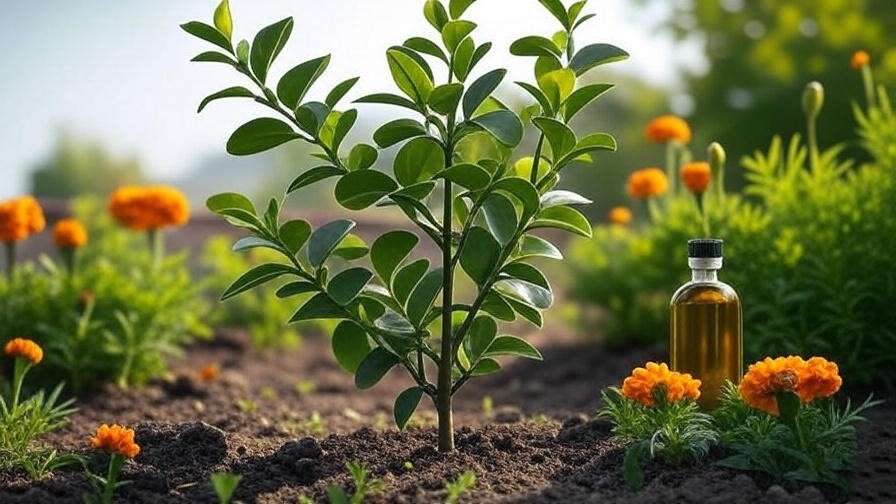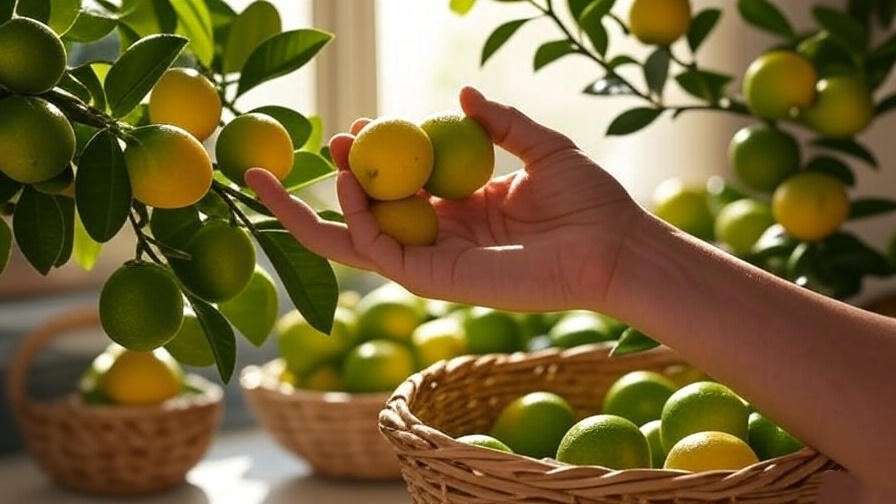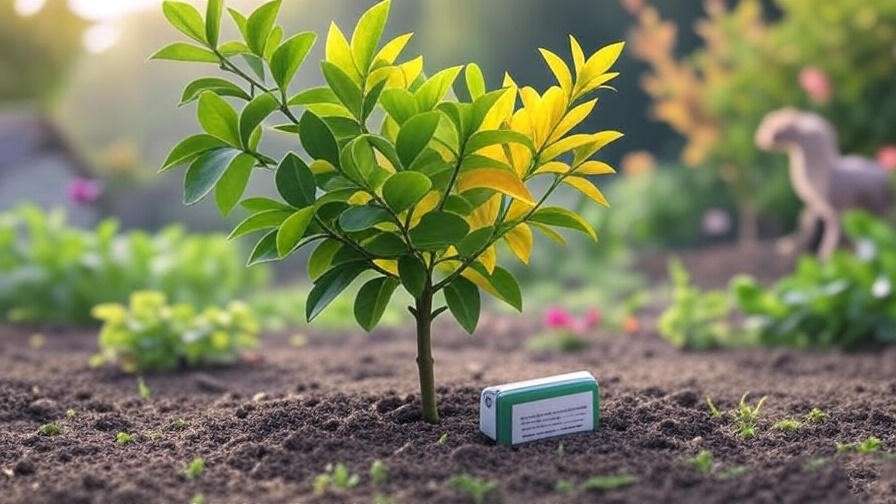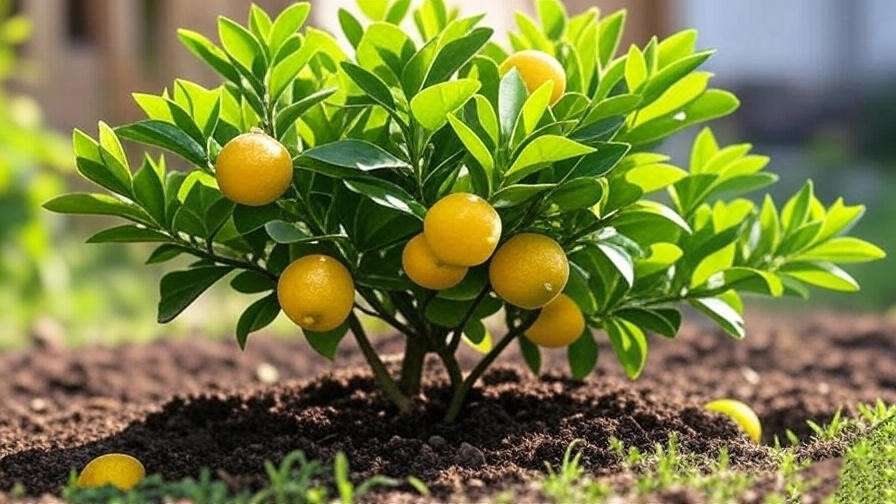Imagine stepping onto your patio, plucking a fresh, zesty lime from your very own dwarf lime tree, and adding it to your favorite dish or drink. 🌞 Whether you’re a seasoned gardener or a beginner with limited space, growing a dwarf lime tree is a rewarding way to enjoy homegrown citrus year-round. These compact, vibrant trees are perfect for small gardens, balconies, or even indoor spaces, delivering lush foliage and juicy fruit with the right care. In this comprehensive guide, we’ll walk you through expert tips, proven techniques, and troubleshooting advice to ensure your dwarf lime tree thrives. Backed by horticultural expertise and hands-on experience, this article will empower you to cultivate a healthy, productive tree that elevates your home and harvest. 🍈
What Is a Dwarf Lime Tree? 🍋
Definition and Characteristics
A dwarf lime tree is a compact citrus variety, typically growing 3-6 feet tall, making it ideal for small spaces like patios, balconies, or indoor environments. Unlike standard lime trees, dwarf varieties are bred or grafted to maintain a smaller size while producing full-sized, flavorful fruit. Popular types include the Bearss lime (seedless and juicy), Persian lime (versatile and prolific), and Key lime (tangy and aromatic). These trees feature glossy green leaves, fragrant white blossoms, and a growth habit suited for containers or small garden plots. Their adaptability makes them a favorite among urban gardeners and citrus enthusiasts.
Benefits of Growing a Dwarf Lime Tree
Why choose a dwarf lime tree? 🌱 For starters, its compact size fits perfectly in tight spaces, from apartment balconies to cozy backyards. With proper care, these trees can produce fruit year-round, offering a steady supply of fresh limes for cooking, beverages, or garnishes. Beyond their practical benefits, dwarf lime trees add aesthetic charm with their vibrant foliage and blossoms, enhancing any space. They’re also relatively low-maintenance compared to larger citrus trees, making them an excellent choice for beginners and experienced growers alike.
Expert Insight: “Dwarf lime trees are a game-changer for home gardeners,” says Dr. Emily Carter, a horticulturist with over 15 years of citrus cultivation experience. “Their size and productivity make them a versatile option for anyone looking to grow fresh fruit in limited spaces.”
Choosing the Right Dwarf Lime Tree 🌱
Selecting a Healthy Tree
When purchasing a dwarf lime tree, quality matters. Visit a reputable nursery or trusted online supplier and look for a tree with vibrant, glossy leaves, a sturdy stem, and no signs of pests or disease. Avoid trees with yellowing leaves, wilting, or sparse foliage, as these may indicate stress or poor health. Opt for grafted trees, as they tend to produce fruit faster and more reliably than seed-grown varieties. Check the root system if possible—healthy roots should be white and firm, not brown or mushy.
Best Varieties for Your Needs
Choosing the right variety depends on your climate, space, and flavor preferences. Here’s a quick breakdown:
- Bearss Lime: Seedless, juicy, and mild, ideal for juicing and cooking. Thrives in USDA zones 9-11.
- Persian Lime: Larger fruit, versatile for culinary use, and highly productive. Great for beginners.
- Key Lime: Smaller, tangy fruit perfect for desserts like Key lime pie. Slightly less cold-hardy.
Consider your growing conditions—indoor growers may prefer Key limes for their smaller size, while outdoor gardeners in warm climates might opt for Bearss or Persian limes for higher yields.
| Variety | Fruit Size | Flavor | Hardiness | Best For |
| Bearss Lime | Medium-Large | Mild, Juicy | Zones 9-11 | Juicing, Cooking |
| Persian Lime | Large | Balanced | Zones 9-11 | General Use |
| Key Lime | Small | Tangy, Aromatic | Zones 10-11 | Desserts, Drinks |
Container vs. In-Ground Planting
Dwarf lime trees thrive in both containers and in-ground settings, but each has pros and cons. Containers offer mobility, making it easy to move the tree indoors during cold snaps, and are perfect for small spaces. Choose a pot at least 12-16 inches in diameter with drainage holes to prevent root rot. In-ground planting suits larger spaces and warmer climates, allowing the tree to establish deeper roots for potentially higher yields. However, in-ground trees are less flexible during extreme weather. For both methods, use well-draining, slightly acidic soil (pH 6.0-6.5).
Tip: Test your soil’s pH with a kit (available at garden centers) to ensure it’s in the ideal range for citrus growth.
Planting Your Dwarf Lime Tree 🌞
When and Where to Plant
The best time to plant a dwarf lime tree is in spring or early summer, when temperatures are warm and frost risk is minimal. Choose a location with 6-8 hours of direct sunlight daily, as citrus trees thrive in bright conditions. For outdoor planting, select a spot sheltered from strong winds, ideally near a south-facing wall to maximize warmth. If you’re in USDA zones 9-11, your tree can stay outdoors year-round; otherwise, plan to bring it indoors during winter or use protective covers.
Step-by-Step Planting Guide
- Prepare the Soil or Pot: Use a well-draining potting mix (e.g., cactus or citrus-specific mix) for containers or amend garden soil with sand and organic matter for in-ground planting.
- Dig the Hole: For in-ground planting, dig a hole twice as wide and as deep as the root ball. For pots, ensure the container is large enough to accommodate future growth.
- Place the Tree: Set the tree in the hole or pot, ensuring the graft union (if present) is above soil level. Fill with soil, pressing gently to eliminate air pockets.
- Water Thoroughly: Water immediately after planting to settle the soil. Keep the soil consistently moist but not soggy for the first few weeks.
- Mulch: Apply a 2-inch layer of organic mulch (e.g., bark or compost) around the base to retain moisture and regulate soil temperature, keeping it away from the trunk.

Indoor vs. Outdoor Planting
Indoor growers should place their dwarf lime tree near a south-facing window or supplement with a full-spectrum grow light (12-14 hours daily). Maintain indoor temperatures between 60-85°F and humidity above 50% to mimic the tree’s natural environment. Outdoor trees need protection from frost—use blankets or move containers indoors if temperatures drop below 32°F. In hot climates, provide afternoon shade to prevent leaf scorch during summer heatwaves.
Expert Tip: “For indoor trees, a humidifier or daily misting can prevent leaf drop and promote healthy growth,” advises Dr. Carter.
Essential Care Tips for a Thriving Dwarf Lime Tree 🌿
Watering Needs
Dwarf lime trees require consistent moisture but are sensitive to overwatering. Water when the top 1-2 inches of soil feel dry, typically every 5-7 days for outdoor trees and 3-5 days for potted ones, depending on climate and season. Use a saucer under pots to catch excess water, but empty it to avoid root rot. Signs of overwatering include yellowing leaves and soggy soil, while underwatering causes wilting or curling leaves. Always use room-temperature water to avoid shocking the roots.
Fertilizing for Healthy Growth
Citrus trees are heavy feeders, and dwarf lime trees are no exception. Use a citrus-specific fertilizer (e.g., 6-4-6 or 10-10-10) or a balanced organic option like fish emulsion. Apply every 6-8 weeks during the growing season (spring and summer), reducing to every 10-12 weeks in fall and winter. Follow package instructions to avoid over-fertilizing, which can burn roots or cause leaf drop. For organic growers, compost tea or worm castings provide a nutrient-rich alternative.
Pruning and Shaping
Pruning keeps your dwarf lime tree healthy and manageable. Prune in late winter or early spring before new growth begins. Remove dead, damaged, or crossing branches to improve air circulation and light penetration. Trim back leggy growth to maintain a compact shape, especially for container trees. Use clean, sharp pruning shears to prevent disease spread. Regular pruning also encourages fruit production by redirecting energy to healthy branches.
Sunlight and Temperature
Dwarf lime trees thrive in full sun, requiring at least 6 hours of direct light daily. If growing indoors, supplement with grow lights during shorter winter days. Ideal temperatures range from 60-85°F; prolonged exposure to temperatures below 50°F or above 100°F can stress the tree. In hot climates, provide afternoon shade or use shade cloth during heatwaves. For cold snaps, wrap the trunk or move potted trees indoors to protect from frost.
Tip: Create a seasonal care checklist to stay on top of watering, fertilizing, and pruning tasks:
- Spring: Fertilize, prune, increase watering.
- Summer: Monitor for pests, provide shade if needed.
- Fall: Reduce fertilizing, prepare for cooler weather.
- Winter: Protect from frost, limit watering.
Pest and Disease Management 🐞
Common Pests
Dwarf lime trees, like all citrus, can attract pests that threaten their health. Common culprits include:
- Aphids: Tiny sap-sucking insects that cause leaf curling and stunted growth. Control with a strong water spray or insecticidal soap.
- Spider Mites: Microscopic pests that create webbing and yellow stippling on leaves. Use neem oil or increase humidity to deter them.
- Citrus Leaf Miners: Larvae that tunnel through leaves, creating wavy trails. Remove affected leaves and apply neem oil to prevent spread.
Prevent pests by maintaining tree vigor through proper watering and fertilization. Companion planting with marigolds or garlic can repel pests naturally. For severe infestations, consult a local nursery for citrus-safe pesticides.

Common Diseases
Dwarf lime trees are susceptible to several diseases, but early detection can save your tree:
- Citrus Greening (Huanglongbing): A bacterial disease spread by psyllids, causing mottled leaves and bitter, misshapen fruit. There’s no cure, so focus on prevention by controlling psyllids and removing infected branches.
- Root Rot: Caused by overwatering or poor drainage, leading to wilting and yellowing. Ensure proper drainage and reduce watering frequency.
- Fungal Infections: Sooty mold or anthracnose can develop in humid conditions. Improve air circulation through pruning and apply copper-based fungicides if needed.
Regularly inspect your tree for symptoms like discolored leaves, unusual growths, or sticky residue. Clean tools with alcohol between cuts to prevent disease spread.
Proactive Care
Prevention is key to keeping pests and diseases at bay. Check your tree weekly for signs of trouble, especially under leaves and near the base. Maintain a clean growing area by removing fallen leaves and debris, which can harbor pests. For indoor trees, ensure good air circulation with a small fan to reduce fungal risks. Integrated pest management (IPM), combining cultural, biological, and chemical controls, is highly effective. For example, introducing beneficial insects like ladybugs can naturally reduce aphid populations.
Expert Insight: A 2023 study from the University of Florida’s Citrus Research Center emphasizes that “consistent monitoring and early intervention are critical for managing citrus pests, especially in compact varieties like dwarf lime trees.”
Harvesting and Using Your Dwarf Lime Tree Fruit 🍈
When to Harvest
Knowing when to pick your limes ensures the best flavor and quality. Limes are ready when they’re fully colored (typically bright green, though some varieties yellow slightly), feel firm but slightly yielding, and are about 1.5-2 inches in diameter. Gently twist or cut the fruit from the stem to avoid damaging the tree. Harvesting too early results in sour, underdeveloped limes, while waiting too long may cause them to dry out.

Maximizing Fruit Production
To boost fruit yield, ensure proper pollination and care. Outdoor trees are typically pollinated by bees, but indoor trees may require hand-pollination. Use a small paintbrush to transfer pollen from one flower to another. Encourage repeat blooming by maintaining consistent watering, fertilizing, and pruning. Stress factors like extreme temperatures or nutrient deficiencies can reduce fruiting, so monitor conditions closely. Young trees may take 1-3 years to produce fruit, but with proper care, mature dwarf lime trees can yield dozens of limes annually.
Creative Uses for Limes
Fresh limes from your dwarf lime tree are incredibly versatile:
- Culinary Uses: Add zest to salads, marinades, or desserts like Key lime pie. Squeeze fresh juice into cocktails, limeade, or guacamole for a burst of flavor.
- Non-Culinary Uses: Use lime juice as a natural cleaner for cutting boards or to remove stains. Create lime-infused essential oils for aromatherapy or homemade candles.
- Storage: Store limes in a cool, dry place for up to 2 weeks or refrigerate for a month. Freeze juice in ice cube trays for convenient use.
Tip: Try this simple lime-infused water recipe: Slice one lime, add to a pitcher of water with a sprig of mint, and let it infuse for 2 hours. Enjoy a refreshing, healthy drink! 🍹
Troubleshooting Common Issues 🔧
Yellowing Leaves
Yellow leaves are a common concern and can stem from multiple causes:
- Nutrient Deficiency: Lack of nitrogen or iron causes yellowing. Apply a citrus-specific fertilizer or chelated iron supplement.
- Overwatering/Underwatering: Check soil moisture and adjust watering to keep it consistently moist but not soggy.
- Pests: Inspect for aphids or spider mites and treat promptly.
Test soil pH and nutrient levels to pinpoint the issue. Adjust care practices and monitor for improvement within 1-2 weeks.

No Fruit Production
If your tree isn’t fruiting, consider these factors:
- Age: Young trees (under 2-3 years) may not be mature enough to bear fruit.
- Pollination: Indoor trees may need hand-pollination to produce fruit.
- Stress: Inconsistent watering, poor light, or nutrient deficiencies can inhibit fruiting. Address environmental factors and ensure optimal care.
To encourage fruiting, fertilize regularly, ensure adequate sunlight, and prune to promote airflow and energy allocation to fruit production.
Dropping Fruit or Flowers
Premature fruit or flower drop is often caused by environmental stress:
- Water Issues: Inconsistent watering can cause the tree to abort fruit. Maintain a steady watering schedule.
- Temperature Fluctuations: Sudden changes in temperature or humidity can trigger drop. Protect from drafts or extreme weather.
- Nutrient Imbalance: Over-fertilizing or deficiencies can cause stress. Follow a balanced fertilization schedule.
Expert Tip: Create a troubleshooting flowchart: Check water → Inspect for pests → Test soil nutrients → Adjust light/temperature. This systematic approach helps diagnose issues quickly.
Seasonal and Long-Term Care 🌸
Winter Care
Winter can be challenging for dwarf lime trees, especially in colder climates:
- Frost Protection: Cover outdoor trees with frost blankets or burlap during cold snaps. Move potted trees indoors to a sunny spot.
- Reduced Watering: Water less frequently, as the tree’s growth slows in dormancy. Check soil moisture to avoid overwatering.
- Indoor Care: Maintain humidity with a tray of pebbles and water or a humidifier to prevent leaf drop.

Summer Maintenance
Summer is peak growing season, requiring extra attention:
- Watering: Increase frequency during hot, dry weather, ensuring soil stays moist but not waterlogged.
- Pest Monitoring: Check weekly for pests like spider mites, which thrive in warm conditions.
- Shade: Provide afternoon shade in extreme heat (above 90°F) to prevent leaf scorch.
Long-Term Success
To keep your dwarf lime tree thriving for years:
- Repotting: Repot container trees every 2-3 years to refresh soil and accommodate root growth. Choose a pot 2-4 inches larger in diameter.
- Health Monitoring: Regularly inspect for signs of stress, pests, or disease. Healthy trees have glossy leaves, strong growth, and consistent fruiting.
- Pruning: Annual pruning maintains shape and encourages productivity.
Tip: Use this yearly care calendar to stay organized:
- January-February: Prune, reduce watering, protect from frost.
- March-May: Fertilize, increase watering, monitor for pests.
- June-August: Maintain consistent care, provide shade if needed.
- September-December: Reduce fertilizing, prepare for winter.
FAQs About Dwarf Lime Tree Care ❓
Q1: How long does it take for a dwarf lime tree to bear fruit?
A: Most dwarf lime trees produce fruit within 1-3 years, depending on age, variety, and care. Grafted trees fruit faster than seed-grown ones.
Q2: Can a dwarf lime tree survive indoors year-round?
A: Yes, with 6-8 hours of sunlight (or grow lights), temperatures of 60-85°F, and adequate humidity. Hand-pollination may be needed for fruiting.
Q3: What’s the best fertilizer for dwarf lime trees?
A: Use a citrus-specific fertilizer (e.g., 6-4-6) or organic options like compost tea. Apply every 6-8 weeks during the growing season.
Q4: How do I protect my dwarf lime tree from pests naturally?
A: Use neem oil, introduce beneficial insects like ladybugs, or plant pest-repellent companions like marigolds. Regular inspections prevent infestations.
Q5: Why is my dwarf lime tree dropping leaves?
A: Leaf drop can result from overwatering, low humidity, pests, or temperature stress. Check soil, humidity, and environmental conditions to diagnose.
Conclusion
Growing a thriving dwarf lime tree is a rewarding journey that brings fresh, zesty fruit and lush greenery to your home. 🌿 By following these expert care tips—choosing the right variety, planting properly, and maintaining consistent care—you’ll enjoy a healthy, productive tree for years. Whether you’re a beginner or a seasoned gardener, the key is patience and attention to your tree’s needs. Start your dwarf lime tree adventure today, share your progress in the comments, and explore our related articles on citrus care for more inspiration! 🍋













